Possum is one of the marsupials that are in Australia. Though its name seems the shorter version of opossum in America, they’re two different marsupials.
Unfortunately, it’s common to see dead possums along the road. It happens every month because of cars, cat or dog attacks, and electrocution. Since possums are marsupials, you have to check their pouches if there are babies or not.
Do possums have a pouch? Female possums have a pouch with two mammae. Thus, they can have one or two babies, but a mother possum usually bears two young possums or joeys. The offspring stay in the pouch for several months before getting on their mother’s back.
You’ll likely possums with babies in spring, but producing offspring can happen any time of the year. Rearing babies in a pouch is a practice that is only done by marsupials. Hence, it’s not common among the majority of the animal population.
You may only have limited ideas about possums and their pouches. Due to their unique body structure, they’re interesting. Read this article as it has more information for a better understanding of these creatures.
Table of Contents
What Is Exactly the Pouch of a Possum?
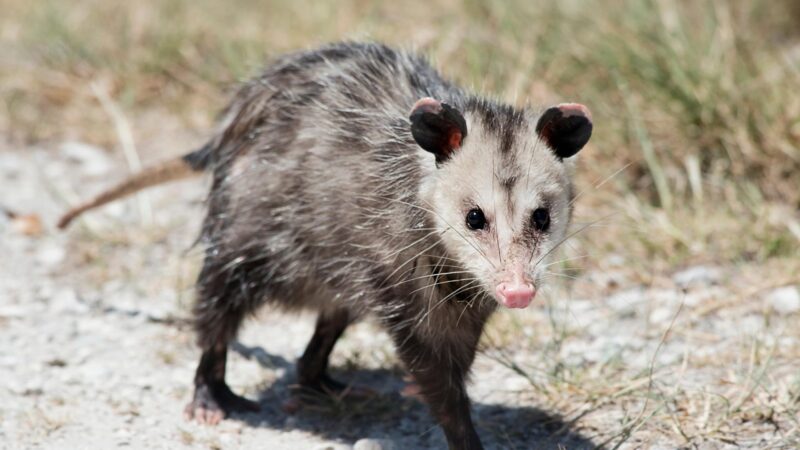
A female possum has a well-developed pouch with mammary glands akin to eutherian mammals. Just like any other marsupials, a possum has a pouch because there’s a relatively shorter gestation period.
The development and maturation continue in the pouch. This is how unique the biological system of marsupials is.
The inside of the possum’s pouch is clean and moist with brown-colored oily accumulations. Although a mother possum will lick it, this setting happens due to the discharge of antimicrobial compounds from mammary glands and epithelial tissue. This is preparation for welcoming an offspring.
A study has concluded that the discharge of antimicrobial compounds occurs in mammary glands when ovulation is induced.
Why Do Possums Have a Pouch?
Possums have a pouch because their babies crawl through the birth canal and climb in it in just a matter of 17 to 18 days after the conception. The baby that is no bigger than a honey bee comes out of the birth canal blind and hairless.
Once inside the pouch, the offspring attaches itself to the teat for around 70 days. It will come to a point where the baby doesn’t cling to the teat all the time.
When it’s around 110 to 120 days, it develops fur and can leave the pouch for a short period. However, it can’t stay outside of the pouch for a long time since it needs warmth. Baby possums continue to suck on their mother’s teat for 2 to 3 months. They leave the pouch when they’re 5 to 6 months old.
The Reproductive System of a Possum
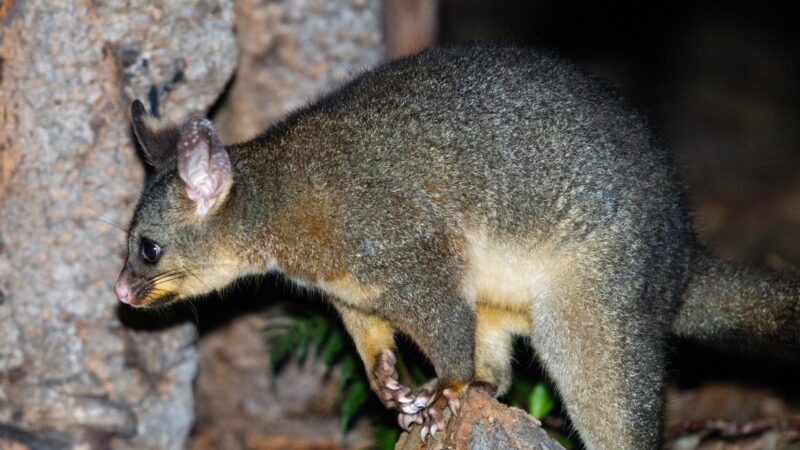
The Reproductive System of Female Possum
The reproductive system of a female possum is strange as it consists of two oviducts, two ovaries, and two uteri that are composed of two short, narrow crevices.
Don’t be surprised, but double reproductive parts are common among female possums. Even their vaginal apparatus has two lateral canals that go from vaginal-cul-de-sac until urogenital sinus. Hence, a female possum has two vaginas.
Due to these features, a female possum is a therian animal that has two vaginas in a single structure. The funny thing about it is that neither of the two vaginas works as a birth canal. Instead, a special birth canal develops during pregnancy, and it will disappear after newborn possums are out. Thus, this birth canal is a transitory structure.
After the delivery, the babies get into the pouch or ‘living incubator’. This pouch is common among marsupials like possum since these animals don’t have a well-developed placenta.
The Reproductive System of Male Possum
The reproductive system of a male possum includes a bifid penis, a pair of testes, an excurrent ductal system, and two sex glands, which are the prostate and Cowder’s glands. When in a normal state, the penis is barely visible, and it’s buried in the skin’s invagination called preputial sac. On the other way around, this sac disappears when the penis erects from the cloaca.
The pair of testes is within the prominent scrotum, and the scrotal sac is in front of the penis. A male possum has a scrotum that is attached to the abdominal wall. It’s surrounded by a thin skin and sparse, fine hair. Moreover, the prostate is found around the urethra.
Also, it has accessory sex glands that are similar to humans and other mammals. These glands produce fluid for the spermatozoa that are essential for mating and producing offspring. A male possum can ejaculate a large amount of prostatic fluid to discourage the insemination of other males.
Do Male Possums Have a Pouch?
Male possums don’t have a pouch.
How Long Do the Baby Possums Remain Inside the Pouch?
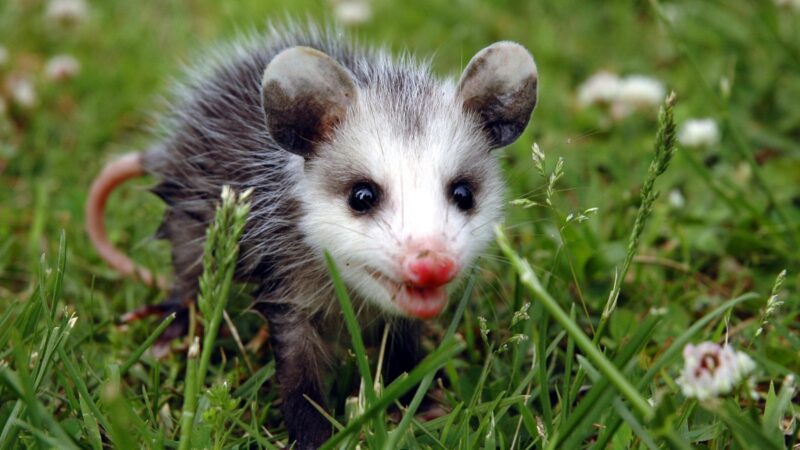
Baby possums remain inside the pouch for two or three months.
What Do You Do If You Find a Baby Possum Alone?
You can sometimes find a baby possum inside its mother’s pouch. A baby possum or joey is attached to the teat in their first few months.
Detaching the baby from the teat can cause injury if you’re not careful.
It’s best to take the dead mother with its baby inside the pouch to the vet, or you can contact the wildlife rehabilitation center. You may cut the teat to separate the baby from the dead body but better call the experts if you’re not sure about what you’re doing.
Will a Mother Possum Come Back for Her Baby?
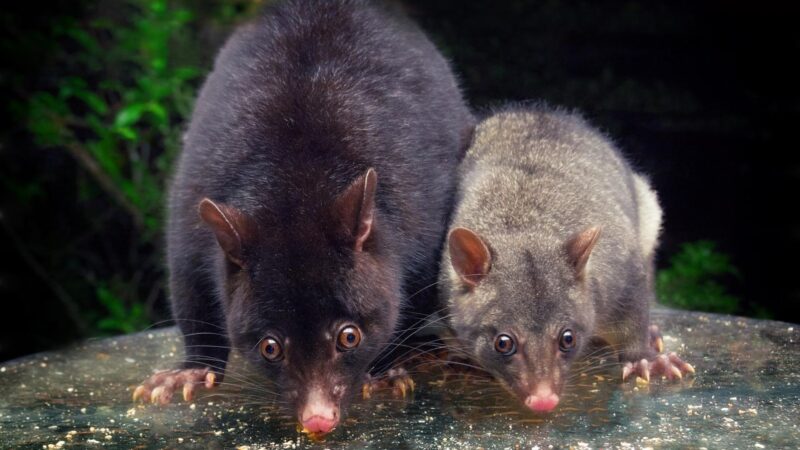
If you find the babies in their den, the mother will come back for them. But if they’re in another location, there’s a low chance for the mother to return as she can be dead.
Do Possum Families Stay Together?
It’s not documented that the male possum takes part in providing for the needs of the babies, so a possum family doesn’t stay together. Male possums are known as solitary except during mating season, so they den alone.
Is It Safe to Check the Pouch of an Injured/Dead Possum?
It’s safe to check the pouch of an injured or dead possum because it’s a clean animal that doesn’t cause diseases.
How Long Do Possums Stay in One Place?
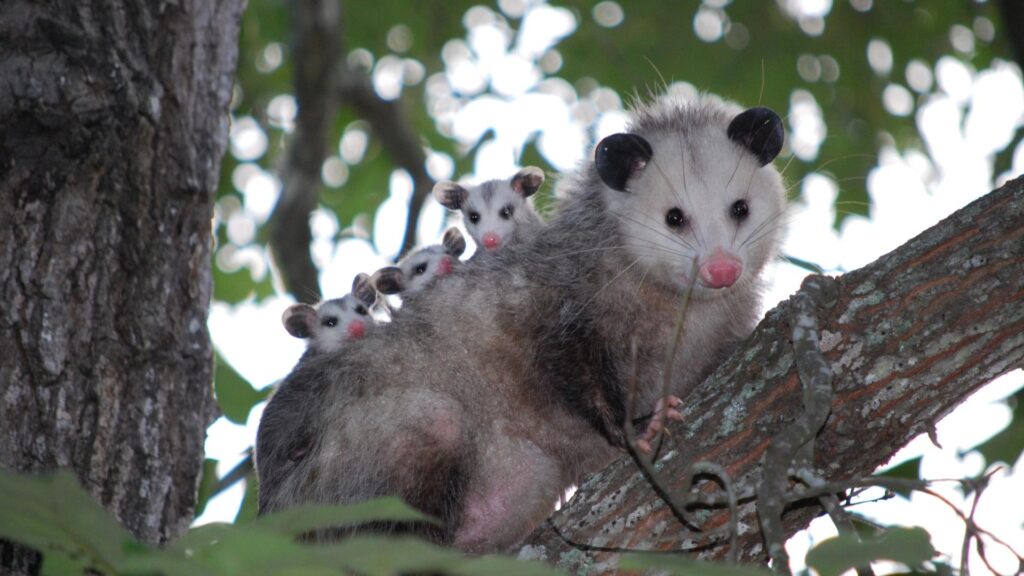
Possums stay in one place permanently as their habitat consists of large, connected tracks of the vast forest. They occupy the hollows of a tree as a den. These animals can have multiple dens, which are within the range of a certain forest. Then, they just transfer from tree to tree as they can be seen feeding on open woodlands.
They usually occupy tropical rainforests, vine forests, monsoon lands, and riparian woodlands. You can see them on large trees most of the time.
How Long Can Baby Possums Go Without Food?
Possums are mammals, and these animals can go without food for 2 to 3 days. It’s the same effect with baby possums.
Can You Touch a Baby Possum?
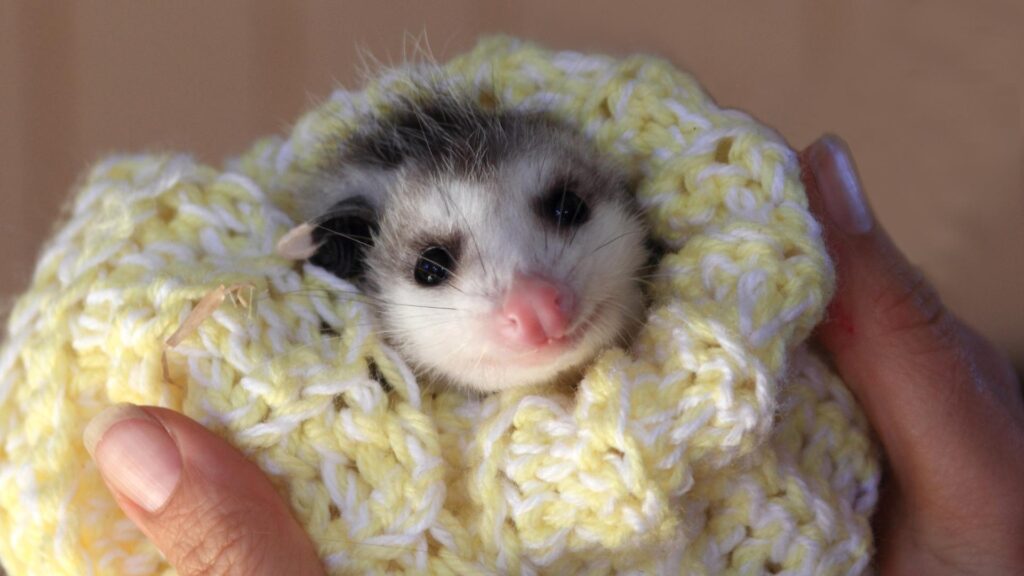
You can touch a baby possum, but you have to be careful and gentle. If you’re taking it out of the pouch, you shouldn’t force it as its delicate limbs might get snagged.
Frequently Asked Questions
Do Baby Possums Come Out in the Daytime?
Baby possums rarely come out in the daytime. Possums are nocturnal so they hunt for food starting around 9 pm until 5 am. The mother and babies dens during the day in the hollows of the tree with epiphytes mat and dry leaf nest.
What Does a Baby Possum Eat?
A baby possum feeds on the milk of its mother. It’s attached to a teat for a certain period until it can take in solid food. Possums are arboreal insectivores, so they mostly consume social insects like ants, termites, and wood-boring larvae of beetles and moths. A baby possum at the right age can eat fruit, nectar, sap, pollen, and flowers.
It’s best to put them on a high protein diet. But constipation is sometimes experienced by baby possums. They appear healthy and eat well, but feces can’t be found in the pouch.
Are Possums Aggressive?
Possums can be aggressive because they’re territorial. In a study regarding the territorial behavior of possums, agonistic behavior is prominent in most observations. A possum would ward off another possum that is not a part of their group.
To scare off an enemy, a possum emits a musky and pungent odor. It’s so powerful, and it’s even worse than the scent of other marsupials.
Are Possums Bad to Have Around?
Possums are bad to have around because of the adverse effects on plants and vegetation as well as other animals like vertebrae and invertebrates. The direct adverse effect on plants starts with the food choices of the possum.
A possum can eat 2 to 8 kinds of plants every time it forages at night. This animal is more interested in something new and unusual. Thus, it can happen that it will be interested in endangered plant species. When the possum likes it very much, the plant can be gone quickly.
Possums are also culprits in hunting the nests of some birds like falcons and kokako. As they harass breeding birds, they impede the population increase of other animals. It’s a sensitive thing when it comes to endangered animal species. This doesn’t only happen with birds but with vertebrae and invertebrates since possums are insectivores.
Summary
Being marsupial, possums have a pouch to let their babies grow to be ready for the outside world. The offspring of possums are naked, blind, and hairless, so it needs protection. So, they usually have two joeys that cling to their teats for milk. The pouch offers warmth to young possums since they can’t regulate their temperature.
List of Sources
Deakin, J. E., Cooper DW. (2004). Characterisation of and immunity to the aerobic bacteria found in the pouch of the brushtail possum Trichosurus vulpecula. Science Direct.
Old, J. M., Irving, M., & Deane, E. M. (2005). Histology of the pouch epithelium and the mammary glands during chemically induced oestrus in the brushtail possum (Trichosurus vulpecula). Journal of anatomy.